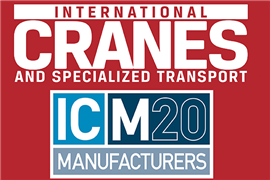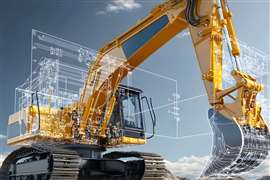More flexibility
27 February 2008
The Construction Equipment industry is facing ever-more stringent laws to limit the levels of pollutants emitted from diesel engines. As the laws get tighter, the technical challenges also increase, and there will be a big leap for the next step – Stage IIIB – when exhaust after-treatment systems are likely to be needed for the first time.
In the past, compliance with emissions regulations was generally achieved by redesigning engines. Equipment manufacturers would than have to incorporate these into their machines.
However, the need to use after-treatment systems will have a much more profound effect. As well as having to incorporate new engines, equipment manufacturers will have to make significant design changes to the machines themselves in order to incorporate the physical bulk and added complexity of these additional components.
Most of the 1500 or so manufacturers active in the European construction equipment sector are small and medium sized enterprises (SMEs), and this additional design burden presents a serious problem.
It was these concerns that led the legislation to be written with 'flexibility' provisions for manufacturers, which allow them to market machines with 'old stage' engines after new legislation has come into force. In the past manufacturers have been given an allowance of 20% of their annual production under the flexibility provisions. This has helped them schedule the introduction of new products over a period of time, instead of having to simultaneously launch new machines across an entire range.
New Challenges
The difficulties involved in achieving compliance with Stage IIIB and Stage IV legislation cannot be understated. Equipment manufacturers will have to safely incorporate after-treatment systems for the first time, and these will have to be individually optimised to suit each machine type.
Unfortunately, technical studies have shown that there are no suitable retrofit solutions on the market that will allow a simple transition from the current Stage IIIA machines to Stage IIIB. This means a complete re-design for every model.
This is a formidable task. Many manufacturers in the sector make in excess of 300 different products – some produced in volumes of less than 10 units per year. However, no matter how small the volume, each must be certified.
The increased challenges involved in meeting the requirements of Stage IIIB means that there is a strong case for increased flexibility allowances.
Indeed, the European Directive that sets out future engine emissions laws for the construction equipment industry (2004/26/EC) includes the provision that, “The Commission shall, not later than 31 December 2007 consider....the possible need for additional flexibilities.”
The need for more flexibility is also recognised by the US Environmental Protection Agency (EPA) in its equivalent laws. The agency allowed 80% flexibility for Tiers 2 and 3, and will allow an additional 70% (150% in total) for interim Tier 4 and final Tier 4 – equivalent to Stage IIIB and IV. Compared to Europe's 20% allowance, the US is allowing 7,5 times more flexibility.
Industry Needs
It is for these reasons that the European industry is calling for an increase in flexibility allowances for Stage IIIB and beyond. The existing 20% allowance should be increased to 50%. There should also be a proportional increase in the 's mall volume' allowances, which allow manufacturers the option of 'flexing' a fixed number of units rather than a percentage of their production.
CECE and its partners believe this essential to the smooth implementation of these demanding laws. It also believes the emissions impact of this would be small, and also adds that there would not be any additional administrate burdens involved in making this change.
STAY CONNECTED


Receive the information you need when you need it through our world-leading magazines, newsletters and daily briefings.
CONNECT WITH THE TEAM










